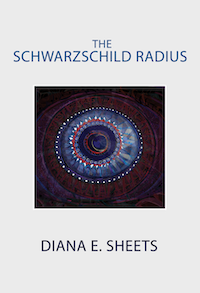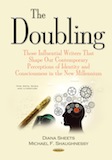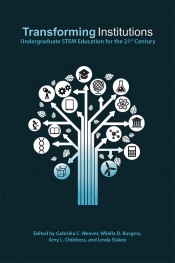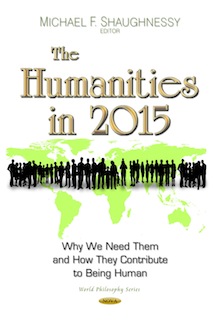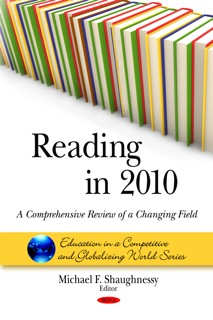The Humanities in Crisis: What Went Wrong and How to Restore Their Centrality in our Daily Lives, Part 2
Part 2 of “The Humanities in Crisis: What Went Wrong and How to Restore Their Centrality in our Daily Lives”. It will be serialized in three parts. It examines the factors underlying the decline of the humanities in liberal arts colleges and universities today.
This essay is available in a collection edited by Michael F. Shaughnessy entitled The Humanities in 2015: Why We Need Them and How They Contribute to Being Human. It was published in 2014 by Nova Science Publishers. A “read only” version of the essay, provided it is intended for noncommercial purposes, may be accessed from my Literary Gulag website by clicking on the book cover image of The Humanities in 2015, http://www.literarygulag.com/, as well as from my Literary Gulag website featured at the University of Illinois IDEALS Open-Access website, https://www.ideals.illinois.edu/handle/2142/54916. All copyright permissions must be obtained from the publisher.
Diana Sheets
English and History Departments, iFoundry Fellow
University of Illinois
DEDICATED TO STEPHEN E. LEVINSON
WHOSE LOVE OF SCIENCE SHAPED HIS APPRECIATION OF THE HUMANITIES
History of the Humanities in the West
By the late twentieth and early twenty-first centuries, most scholars had shifted away from a positivistic framework that considered Western cultural history simply as a lockstep series of advancements from ancient to contemporary times progressing along a continuum stretching from antiquity to the Middles Ages on to the early modern and subsequently the modern era followed by today’s postmodern discontents. The most ambitious effort in recent years to reimagine and recontextualize the humanities is Rens Bod’s A New History of the Humanities: The Search for Principles and Patterns from Antiquity to the Present (Oxford University Press, 2013), which sidelines the social sciences so as to highlight what he believes are the natural ties between the sciences and the humanities. His perspective is global with the West but one of several players in the cosmopolitan mix and not always the lead instigator of our cultural advancement.
Bod’s narrative eschews a detailed, fact-based analysis that concentrates on highly specialized disciplines such as the classics or literature or history. Instead, he emphasizes global patterns based upon methodological principles (Bod, 2013, p. 5). His intent borders on hubris, namely, to provide “the first overarching history of the humanities in the English language” (Bod, 2013, p. 1).
Bod’s study represents an outgrowth of several conferences on the humanities that he has spearheaded. The first covered the early modern period and the second examined cultural developments up to the modern age. Papers presented at the initial conferences ultimately formed the basis for volume one, The Making of the Humanities: Early Modern Europe, and volume two, The Making of the Humanities: From Early Modern to Modern Disciplines (Eds. Bod, Maat, Weststeijn, Amsterdam University Press, 2010 & 2012). A third conference, “The Making of the Modern Humanities”, occurred in 2012. Its proceedings will be published late in 2014 and available at the fourth conference, which is scheduled in October that same year. The theme of the 2014 conference on the humanities will be “connecting disciplines”. It is anticipated that those proceedings will be published and available in 2016.
In A New History of the Humanities, Bod presents his interpretation of the subject and its trajectory. His analysis replaces historical deductions and conclusions derived from bona fide historical evidence with “the quest for patterns in humanistic material on the basis of methodical principles” (Bod, 2013, p. 7). This approach transcends regional identities and academic disciplines. Bod’s goal is to “investigate the expressions of the human mind”, which he believes to be the driving force of the humanities (Bod, 2013, p. 1). In analyzing these developments he looks for “metapatterns”, those overarching shifts in behavior that, he suggests, redefine the human experience (Bod, 2013, p. 6).
Given Bod’s search for unifying “principles and patterns” distilled through the spectrum of metapatterns, it is little wonder that nineteenth century German historians engaged in realism and factual analysis—most notably Leopold von Ranke (1795-1886) and Wilhelm Dilthey (1833-1911)—become the villains in his revisionist narrative. Ranke is abhorred for insisting that scholars demonstrate in their writings “how it really was—“wie es eigentlich gewesen”—(Bod, 2013, p. 251), that is, a past founded on realism and based on careful reconstruction of fact-based history. Similarly Dilthey is marginalized for emphasizing that the humanities—Geisteswissenschaften—should consign itself to “understanding”—verstehen—while the sciences—Naturwissenschaften—should concentrate on “explaining”—erklären (Bod, 2013, pp. 7, 251-8).
Bod’s methodological heroes are twentieth century neo-Marxist French historians from the Annales School with their celebration of sweeping narratives and their aversion to gritty historical realism. Above all, he identifies with the publications of Fernand Braudel (1902-1985), which are global in import, panoramic in scope, and suffused with variable time that anticipates “world-systems theory” at the expense of nation states.
Thus in Braudel’s sweeping three volume work The Mediterranean and the Mediterranean World in the Age of Philip II, geological time is glacial. Social and economic developments unfold at a relatively faster pace, although the time horizon may be centuries (long durée), rather than millennia. Event-driven history, by comparison, unfolds quickly with a mass of details, depicting people from all walks of life. Braudel’s study eschews great leaders and nationalistic histories “from above” in favor of narratives about ordinary people “from below” living their daily lives. These quotidian events appear noisily unreliable because they’re unfolding in the messy moment of relatively recent circumstances, rather than the deeper, more constant patterns embedded in the social and economic firmament (Braudel, The Folio Society, 1949/2000).
In Bod’s historical analysis, metapatterns hold sway. His approach borrows from the pioneering work of American historian Hayden White, whose celebrated Metahistory (1973) dispenses with fact-based details. Instead, historiographical schools of thought are represented by means of literary metaphor. Thus, Rankean historians present their narratives by means of synecdoche while Burckhardtian scholars, who follow the cultural lead of their spiritual mentor Jacob Burckhardt, suffuse their historical narratives with irony (Bod, 2013, pp. 6-7, 251-264, 311-312).
Against the backdrop of patterns, metapatterns, and methodological murk provided by Bod based not upon facts but upon nebulous constellations devoid of substantive evidence, there is the issue of the sciences and their relationship to the humanities. He makes the contentious case that the sciences and the humanities have more that binds them than divides them. But on whom does Bod rely on as a scientific expert? None other than the scientific renegade Thomas Kuhn.
Kuhn’s most important book, The Structure of Scientific Revolutions (University of Chicago, 1962/2012), seeks to lay waste to what he regards as the positivistic outlook of the history of science with its seemingly unending string of advancements. Instead, Kuhn inserts twentieth century humanistic angst and postmodern anomie into his historical analysis with the goal of undermining the perception of science as a positivistic enterprise. This is achieved by artificially disrupting its linear progress and its seemingly unbroken chain of scientific advancements with seismic “paradigm shifts” that disrupt continuity and halt scientific progress. Kuhn suggests that these shifts produce contradictory accounts of scientific reality in which one era may bear no relation to the next. Under his analysis objective truth falls by the wayside. The scientific disciplines now begin to resemble their humanistic brethren, mired in relativistic angst and seemingly devoid of cultural advancement.
But does this accurately describe developments in the sciences today? It does not. Rather, this is the narrative that the humanists would like to foist upon the scientific disciplines. The implicit assumption driving the argument is that if the humanities appear no longer capable of advancement, then, too, the sciences must fail.
Bod’s A New History of the Humanities is extraordinarily ambitious. The geographic scope of this study is vast including the West—Europe and the U.S.—and East—China—with excursions into India and Islamic civilizations along with a cursory look at Africa. The time span is gargantuan, extending from 8th century B.C. into the twenty-first century.
The very magnitude of A New History of the Humanities undermines the enterprise. Historical substance is jettisoned in favor of sweeping trends. The analysis is burdened by the use of European periodization—antiquity, medieval, early modern, and modern—to chart the developments of global civilization. The distinctions between West and East resist the author’s simplistic reduction into mere principles and patterns without the substance of factual historical details. But had Bod resorted to facts, events, and noteworthy leaders, his narrative would have faltered under the sheer tonnage of contradictory evidence. Indeed, even in the absence of a fact-based narrative, A New History of the Humanities buckles under its unbearable Herculean load.
Nor are these the only challenges. One of Bod’s central arguments is the indelible link between the sciences and the humanities. However, he fails to assess comprehensively, rather than anecdotally, how advances in the humanities influenced cultural innovations and how these contributions may have been adopted by other disciplines and utilized by the sciences for technological developments.
Bod’s prime example of a humanistic innovation that proved valuable for science and technology was Panini’s invention of rule-based grammar for Sanskrit. Panini’s pioneering innovation was to understand that although the grammar was finite it could be utilized for an “infinite number of linguistic utterances (sentences)” (Bod, 2013, p. 14). Rule-based grammar is used as a predictive model for morphology, as well as syntax and semantics. Not only has it been useful with respect to Sanskrit, the approach was subsequently adopted and successfully applied in Western languages and today informs the basis for modern linguistics, as well as computer language.
But even this example proves problematic. Panini’s path-breaking contribution raises the question of why an innovation pioneered 400 years before Christ that is still being used in linguistics and scientific disciplines today failed to lead India on the path to industrialization and modernization. For an innovation to become culturally significant, it is not enough that it works. It must have a transformative impact on the resident society that then translates to scientific and/or technological success of that country relative to other world powers. That’s the gold standard of measurement.
The answer as to why Panini’s path-breaking achievement never served as a stimulus to modernize India comes not from Rens Bod but from Jonathan Parry in his study of the Brahmanical tradition in Banaras, India (Parry, “The Brahmanical Tradition and the Technology of the Intellect” In J. Overing, Ed., Reason and Morality, Tavistock Publications, 1985). Parry demonstrates that in India mass literacy did not ensure modernization because of the prominence of caste and of the indispensable role given to Brahmin priests in interpreting scripture for Hindu believers.
By contrast in Western Europe, Christians sought a personal relationship with their God. This encouraged the development of the printing press to satisfy demand for bibles that in turn spurred the development of a market for readers interested in both religious and secular books. Mass literacy in Europe ultimately destabilized religious authority and princely power, but not in India. These cultural and social changes led to important changes in how Europeans lived their daily lives and created the preconditions favorable to industrialization (Parry, 1985).
The example of Panini’s rule-based grammar and its contributions for both the humanities (linguistics) and the sciences (computer programing) serves as an anecdotal means by which Bod seeks to demonstrate “that there is only a gradual differentiation between the humanities and the sciences, and that there is a continuum in the nature of the patterns and their possible ‘exceptions’”. He then adds, “The history of the humanities appears to be the missing link in the history of science” (Bod, 2013, p. 7).
Bod rightfully wants us to understand that the human story is not fully understood unless we position it with respect to our natural world. But he undermines his argument when he suggests that because Galileo (1564-1642), Kepler (1571-1630), and Newton (1642-1727) were “engaged in philology” and immersed in “the study of the natural world”, this suggests that they were straddling the scientific and humanistic cultures and, by implication, that the sciences and the humanities were never really that far apart (Bod, 2013, p. 1).
Contrary to Bod’s assertions, by the time that Newton’s Philosophiæ Naturalis Principia Mathematica was published (1687), the distinction between sciences and the humanities was becoming nearly insurmountable to the layperson. Principia, as Mordechai Feingold points out, necessitated acquiring “a new language of mathematics” that even scientists such as Huygens and Leibniz struggled to interpret (Feingold, The Newtonian Moment: Isaac Newton and the Making of Modern Culture, The New York Public Library, 2004, p. 66-7).
Nevertheless, thanks to Voltaire’s fascination with Principia and his commitment to writing and speaking about Newtonian discoveries with great wit and verve, he helped to familiarize the public on the Continent, both men and significant numbers of interested women, with the importance of Newton’s ideas. Newton had become so renowned by the time of his death that he had the public acclaim befitting a modern celebrity. For as Voltaire noted, Newton “lived honoured by his compatriots and was buried like a king...” (Feingold, 2004, p. 98).
Despite the public’s fascination with Newton and his discoveries, he was the last major scientist whose ideas the lay public might, with considerable effort, attempt to understand. In this respect Newton represents both the end of an era when the sciences and the humanities might conjoin and the beginning of a new age in which increasingly the sciences and the humanities existed under separate magisteria, particularly given the challenging mathematics essential to comprehending the post-Newtonian world.
By the time the phenomenon was publically acknowledged by C. P. Snow in his Reid lecture “The Two Cultures and the Scientific Revolution” on May 7, 1959 at the Senate House at Cambridge University, the divide had been widening for centuries. Snow’s central point was that “the intellectual life of the whole of western society is increasingly being split into two polar groups” (Snow, The MIT Press, 1959/1990, p. 169), by which he meant the scientists and the humanists. From his perspective the former had, for all intents and purposes, already won this battle: “If the scientists have the future in their bones, then the traditional culture responds by wishing the future did not exist” (Snow, 1959/1990, p. 171).
F. R. Leavis, a literary critic at Cambridge, responded in his Richmond lecture with “a vicious ad hominem attack” against Snow (S. Critchley, Continental Philosophy: A Very Short Introduction, Oxford University Press, 2001, p. 51). The public controversy highlighted the differences of the two cultures and across the waters even literary critic Lionel Trilling at Columbia University weighed in on the fray in his “Science, Literature & Culture: A Comment on the Leavis-Snow Controversy” published in Commentary (Trilling, 1962, Vol. 33, No. 6, pp. 461-477). But the question shouldn’t be why Leavis and Snow disagreed, but why did Leavis respond with such vitriol? The answer is supplied by Patricia Waugh in her book review of Guy Ortolano’s The Two Cultures Controversy: Science, Literature and Cultural Politics in Postwar Britain, which was published in 2009.
For 30 years, Leavis had pursued a mission to justify the establishment and growth of the ‘English school’ or the discipline of English Literary Studies as the vital centre of university education, the only centre which might hold together the fragmenting specialisms of an increasingly technological era”. (P. Waugh, Reviews in History, No. 849, 2009, http://www.history.ac.uk/reviews/review/849)
To this end Levis envisioned the “English School” as having the ability to bestow “a centre of consciousness ... for our civilization” (Waugh, 2009, citing F. R. Leavis, Two Cultures? The Significance of C. P. Snow, London, 1962, p. 30).
What Leavis understood—what motivated his ill-tempered response—was that literary studies, which he imagined to be the center of human consciousness, was losing relevance while science, technology, and the material world increasingly took center stage. That is why the attack on C. P. Snow was so vicious and so irrational. Spirituality—the moral righteousness embodied in the very firmament of English Literary Studies—was forced to give way to scientific reason with, at least for Leavis, devastating consequences.
In A New History of the Humanities,Bod seeks to conceptualize the humanities so that they resemble their scientific counterparts. No wonder he attempts to minimize the difference between the two cultures. As a computational linguist by training and a historian by inclination, he straddles the divide between the two and tries to reinvent the narrative of the humanities to resemble that of the natural sciences or, failing that, of the social sciences. It’s an interesting approach. His historiographical summaries on early modern and modern European history can be useful learning tools.
But where this book falls short is as a history of the humanities. Methodology and patterns are far more effective when they are embedded in the gritty realism of historical events. Far better to refer to Jacques Barzun’s From Dawn to Decadence: 1500 to the Present (Barzun, HarperCollins Publishers Inc., 2000) if we’re searching for a penetrating account of Western cultural life for the past 500 years.
How the Humanities Are Taught Today: Bowdoin College as an Example
In order to address how to revive the humanities, it is important to examine how they are failing in our colleges and universities today. The report by Peter Wood and Michael Toscano What Does Bowdoin Teach? provides a superb case study of how one highly selective college undermined its educational excellence by introducing a deeply flawed liberal arts curriculum in the 1970s. Nor is Bowdoin an exception since its course offerings are representative of the decay of standards of excellence in the humanities throughout academe. As William Bennett, former Secretary of Education, notes in its “Foreword”, “Bowdoin illustrates the intellectual and moral deficit of the American academy” while noting that “the report is perhaps the most deep and specific to date on how progressive ideology has altered the character of American higher education” (Wood & Toscano, National Association of Scholars, 2013, p. 9, https://www.nas.org/images/documents/What_Does_Bowdoin_Teach.pdf).
In his preface to What Does Bowdoin Teach?, Wood suggests his report is intended to serve as “an ethnography of an academic culture, its worldview, customs, and values” (Wood & Toscano, 2013, p. 13) by examining how standards were undermined by counter-cultural perspectives of the late 1960s that fundamentally compromised standards of excellence and how these circumstances persist today.
For Bowdoin College, he suggests, the first fateful step in shifting the curriculum away from academic excellence and toward identity politics and social justice began in 1969 with the establishment of Afro-American studies and the decision by Bowdoin’s Curriculum and Educational Policy Committee to specify that a black director be hired and that academic positions be established for black faculty who would facilitate the development of the program (Wood & Toscano, 2013, p. 17).
It wasn’t long before Bowdoin also established “gay and lesbian studies, Asian studies, Latin American studies, and environmental studies” (Wood & Toscano, 2013, p. 17). These all fell under the heading of identity politics with the exception of environmental studies, which potentially straddled both a political agenda and a bona fide academic discipline. By 2013 the report estimates 18% of all courses in the curriculum currently at Bowdoin were associated with these studies programs, which, for all intents and purposes, falls under the rubric of identity politics (Wood & Toscano, 2013, p. 18).
But the influence of identity politics and the values it engenders, the study suggests, extends much further when we begin to assess the degree to which this has seeped into traditional academic courses and continues to reflect the progressive worldview of most faculty today (Wood & Toscano, pp. 17-9). Furthermore, if we consider the influences of multicultural clubs identified in the study as the “Africa Alliance, the Africa American Society, the Asian Students Association, Anokha (South Asian students association), the Bowdoin Haitian Alliance, the Circolo Italiano, the International Club, the Korean American Student Association, the Latino American Student Organization, and the Native American Students Association” (Wood & Toscano, 2013, p. 18), we begin to comprehend the reach of identity politics today at Bowdoin. Indeed, of all the clubs on campus only four were academic in scope, focusing, respectively, on physics, robotics, debating, and conversational German (Wood & Toscano, 2013, 18).
Thus, we begin to gain an inkling of the penetration of identity politics not only into the curriculum and student organizations but also into the very essence of the college. What Does Bowdoin Teach? makes the case that the college changed fundamentally in 1970 when then President Howell abolished almost all requirements leaving students essentially free to determine their own courses of study. This meant that survey courses, intermediate level courses, and senior advanced capstone courses were effectively eliminated from the liberal arts. Students would no longer take the broad spectrum of classes that would develop their proficiency in the humanities and Western civilization, laying the foundation for a broader understanding of world cultures. Instead, they begin almost immediately focusing on original research, typically concentrating in areas of interest to the faculty while neglecting a more comprehensive understanding of their discipline (Wood & Toscano, pp. 33, 60, 65-70, 73).
The Harvard equivalent occurred when it replaced their Great Books program in the late 1970s with their Core Curriculum. “The Core”, as Menand noted, “was not about learning for its own sake. It was about learning how to learn”(Menand, 2010, p. 51). That is, Harvard determined that its students need not understand the historical foundations of the sciences, social sciences, and humanistic disciplines. Rather, they would examine methodological approaches to interpreting knowledge with the predilection that “knowing” how to approach a subject was substantially more important than mastering the content of any given subject, the very approach taken by Rens Bod in his book A New History of the Humanities.
Today at Bowdoin, the “First-Year Seminars” remain one of the few requirements. Yet even these course offerings are saturated in identity politics and political correctness and, for the most part, exclude a substantive grounding in the historical and cultural foundations of Western civilization. While there are courses presumably rich in academic content—“Understanding Theater and Dance”, “Great Issues in Science”, “Hawthorne”, “Exercises in Political Theory”, and “The Korean War”, to name a few—other selections abound with progressive bias—“Fictions of Freedom”, “Racism”, “Modern Western Prostitutes”, “Sexual Life of Colonialism”, “Beyond Pocahontas: Native American Stereotypes”, “Queer Gardens”, and “Fan Fictions and Cult Classics” among these (Wood & Toscano, pp. 18-9).
The deficits of Bowdoin’s curriculum are so significant that the report concludes that while it is possible to have “a broad understanding” of the pertinent subject matter in the natural sciences and in government, by comparison most disciplines in the humanities and social sciences “offer either a kaleidoscopic collection of courses or a path to a peculiarly partisan construction of their subjects” (Wood & Toscano, p. 370).
Even more damaging, What Does Bowdoin Teach? concludes that if a student sought a comprehensive understanding of the humanities and social sciences, namely, “to study great works of literature; key epochs in history; the abiding achievements and faultlines of civilizations; the central ideas in philosophy, politics, and economics; and the foundational concepts of science and mathematics” (Wood & Toscano, p. 370), it would be nearly impossible given the deficits in the curriculum and the lack of information available. For that student “would have to stumble onto a good advisor or possess considerable foreknowledge of both these subjects and the Bowdoin curriculum to chart such a path” (Wood & Toscano, p. 370).
In assessing the implications of What Does Bowdoin Teach?, Harvey Mansfield, a neo-Straussian conservative who teaches government at Harvard, considers the deficits of this highly selective college as characteristic of most “elite” colleges and universities today. Why? Because in his view academe is almost entirely liberal, and “today’s liberals do not use liberalism to achieve excellence, but abandon excellence to achieve liberalism” (Mansfield, “The Higher Education Scandal”, Claremont Review of Books, 2013, iii, available online at Real Clear Politics, http://tinyurl.com/ljsxl6y. Mansfield’s ideas closely parallel those of Allan Bloom in his jeremiad The Closing of the American Mind: How Higher Education Has Failed Democracy and Impoverished the Souls of Today’s Students, which chronicled the demise of Western culture and academic excellence.).
In Mansfield’s estimation academic excellence—a focus on the Great Books, an immersion in a range of survey courses that would provide the foundations of a humanistic education familiar with approaches in the social sciences—has all but been eliminated from the curriculum at Bowdoin and most colleges and universities, elite or otherwise (Mansfield, 2013. Mansfield’s assessments echo the sentiments of Alvin Kernan’s What’s Happened to the Humanities [1997], Roger Kimball’s, Tenured Radicals: How Politics Has Corrupted Our Higher Education [1990], and Philip Rieff’s, My Life Among the Deathworks: Illustrations of the Aesthetics of Authority [2006]).
What the student acquires at Bowdoin is a state of “knowingness”, which is essentially confidence absent substance since this “knowingness” possesses little in the way of true knowledge as “the curriculum itself is directed toward the extra-curricular, toward the not particularly well-intentioned and certainly foolish hopes for a not very attractive utopia, as the study concludes, that is without wisdom and without culture” (Mansfield, 2013).
What Might Be Done to Counteract the Erosion of Academic Standards in Academe?
Recently there’s been a spate of publications analyzing what’s gone wrong with academe, some of which have been highlighted by Stanley Fish (“The Woe-Is-Us Books”, The New York Times, November 8, 2010, http://opinionator.blogs.nytimes.com/2010/11/08/the-woe-is-us-books/?_r=0). For our purposes, we will look at just a few to give readers a sampling.
David Horowitz, who has been a staunch advocate over the years for true academic freedom—namely, exposing students to a spectrum of intellectual and political points of view that have been missing from the academy since the late 1980s—advocates a “Bill of Rights” to protect and ensure that students are exposed to differing intellectual ideas and perspectives (Horowitz, Reforming Our Universities: The Campaign for an Academic Bill of Rights, Regnery Publishing 2010). Nevertheless, it’s hard to imagine that this “legalistic” approach might allow for greater intellectual and cultural points of view given that, as the Bowdoin report acknowledges, that there are so few independent and conservative academics on the faculty to ensure a range of intellectual, social, and political perspectives in the curriculum, in the academic readings assigned, in what is actually taught and discussed in the classroom, as well as the ideas expressed by faculty and students on campus (Wood & Toscano, 2013, pp. 13-40).
Indeed, if educational excellence, as Mansfield suggests (2013), has been jettisoned for the cause of liberalism, it’s difficult to believe that intellectual “diversity” can succeed in ensuring a return to academic excellence grounded in the Western experience, embedded in the curriculum, assiduously taught in the classroom, and embraced wholeheartedly on campus. The multicultural and relativistic perspectives sanctioned by diversity promote sanctimoniously disingenuous virtue that is untethered to reality and adverse to exalted standards of excellence” (Sheets, “Virtue”, 2007, https://www.ideals.illinois.edu/bitstream/handle/2142/3469/virtue.htm?sequence=2 or http://www.literarygulag.com/blog/show/11; Sheets, “Looking for Real Virtue in Literature: Fiction Should Reject Solipsistic Preoccupations and Examine the World at Large”, The Christian Science Monitor, 2008, http://www.csmonitor.com/Commentary/Opinion/2008/0109/p09s02-coop.html).
Recent studies by Mark C. Taylor, as well as Andrew Hacker and Claudia Dreifus call for an end of tenure (Taylor, Crisis on Campus: A Bold Plan for Reforming Our Colleges and Universities, Knopf, 2010; Hacker & Dreifus, Higher Education?: How Colleges Are Wasting Our Money and Failing Our Kids—And What We Can Do About It, Times Books, 2010), a reduction of bloated non-academic administrations (Hacker & Dreifus, 2010), an emphasis upon interdisciplinary research (Taylor, 2010), and a movement away from faculty focusing almost exclusively on their narrow areas of specialization to the detriment of courses that offer students a broad grounding in the disciplines (Hacker & Dreifus, 2010).
Hacker and Dreifus offer a fascinating case study on the future of higher education in the humanities as classes become increasingly automated. By way of example, the authors examine a “computer-based course” that is universally required of all undergraduates at Florida Gulf Coast University—“Humanities 2510: Understanding Visual and Performing Arts” (Hacker & Dreifus, 2010, p. 194).
“Humanities 2510” may be seen as the new template for courses offered in our increasingly virtual colleges and universities. Students don’t go to a classroom. Instead, they read assignments online from their computer in their room. They take tests online and submit essays online. Communication is conducted via e-mail. Grading is based on multiple-choices tests augmented by “critical analysis essays” (Hacker & Dreifus, 2010, p. 198). Efforts are made to ensure that papers aren’t plagiarized by means of online databank searches, although it’s difficult to believe that these efforts are truly effective, particularly given the range of essays—both customized and “off-the-shelf”—available for purchase or “scraping” on the Internet and the lack of “live” interactions between individuals grading the essays and students submitting them.
Three faculty members typically oversee the delivery of assignments. The total course enrollment consists of approximately 1,400 students. “Preceptors” grade the essay papers and answer questions posed by students via e-mail. They may live far away, work multiple jobs, and have little formal training other than an undergraduate degree. Their supervisor, presumably also not a university employee, also works remotely. If students ever meet with a resident faculty member overseeing the course, it’s generally because of complaints about grades or issues with deadlines (Hacker & Dreifus, 2010, pp. 196-201).
For many of us, however, this approach to learning presents the technocratic nightmare of a “Brave New World” in which student education is delivered, “taught”, and potentially graded by machine-based learning programs with little or no human interaction. It isn’t hard to envision the next phase of implementation of “Humanities 2510”. The entire course will be a computer algorithm that answers e-mails, grades multiple choice exams, as well as student essays, all of which will be done faster, less expensively, and presumably more reliably than with human preceptors. Whether meaningful education can be achieved by means of this remote and highly automated approach remains to be seen. Nevertheless, this method of teaching is likely to become commonplace in the near future.
Finally, let’s consider Louis Menand’s The Marketplace of Ideas: Reform and Resistance in the American University (W. W. Norton & Company, 2010). Menand, as we noted earlier, teaches at Harvard. He is knowledgeable and writes well. His premises are driven by a need to understand, as well as implicitly to defend the troubled academy. Nevertheless, his analysis provides a starting point for “deconstructing” what has gone wrong since the 1960s and the historical antecedents influencing today’s distressed colleges and universities.
What, for instance, are we to make of Harvard’s decision in the 1970s (Menand, 2010, pp. 29, 50-1) to jettison its Great Books program? Why did Harvard’s Core Curriculum replace evidentiary understanding with nebulous “methods of inquiry” to illuminate the humanities? (Menand, 2010, p. 29). How do these “methods of inquiry” provide students with a foundational grounding in Western civilization in order that they understand substantively that our culture emanated from Judeo-Christian beliefs and how these beliefs paved the way for the Scientific Revolution, the Enlightenment, the Industrial Revolution, and, ultimately, the West’s technological, social, and cultural dominance throughout most of the world from the eighteenth century until at least the end of the twentieth century?
Columbia University still requires its students to take two year-long courses—“Masterpieces of European Literature and Philosophy” and “Civilization in the West”—in order to provide them with an understanding of Western civilization. By contrast, when Harvard made the decision in the 1970s to jettison the Great Books in favor of “methods of inquiry”, Rosofsky, then serving as Dean of the Humanities, reputedly decreed “the Harvard faculty would not shed blood over books” by which he meant, according to Menand, “that there would be no attempt to impose a canon” (Menand, 2010, p. 51, citing Keller’s Getting to the Core).
As late as 2004 when the Harvard faculty was given the option of shifting away from the Core Curriculum to distributional requirements, the proposal was roundly rejected (Menand, 2010, p. 52). No wonder Harvard’s current report “Mapping the Future” skirts away from substantive recommendations since that would necessitate laying waste to the 1960s countercultural progressive agenda, something that academics today remain loath to do.
Menand acknowledges that the changes experienced in the humanities from 1970 through 1990 were “the intellectual and institutional equivalent of a revolution” (Menand, 2010, p. 91). The Western cultural standards were marginalized in favor of identity politics and remedial social justice, which laid waste to academic standards (Sheets, 2010). Nevertheless, Menand contends this “paradigm shift” has not severely compromised the humanities (Menand, 2010, pp. 91-2) even though, as the Harvard study “Mapping the Future” demonstrated, students increasingly choose the social sciences or business, anything but the humanities (“In Brief: The Teaching of the Arts and Humanities at Harvard College: Mapping the Future”, p. 7, http://tinyurl.com/k2ll7be. See the edited collection by Daphne Patai and Will H. Corral, Theory’s Empire: An Anthology of Dissent, particularly the introduction, pp. 1-18.).
Menand implicitly denies the devastating impact of the loss of a canon, the academic implosion caused by the imposition of neo-Marxist literary “Theory”, and the associated death of the author at the expense of a careful “close read” of literature (Patai & Corral, Theory’s Empire: An Anthology of Dissent, Columbia University Press, 2005, pp. 1-18, v). He notes that the changes came from within the academy while failing to acknowledge the enormous damage they had on the intellectual foundation of the humanities. Nor, of course, would he ever acknowledge Mansfield’s formentioned maxim that “today’s liberals do not use liberalism to achieve excellence, but abandon excellence to achieve liberalism” (Mansfield, 2013). The academy in the twenty-first century, Menand suggests, is about “interdisciplinarity and anxiety”, but, of course, he refuses to trace the causes for this angst back to the source, namely, the demise of the Western canon in the 1960s (Menand, 2010, pp. 93-135).
What should be the aim of our educational institutions of higher learning today? Ideally, the greatest contributions of the humanities should stand side-by-side with the contributions of the sciences in our “knowledge pantheon”, that virtual reimagining of the Alexandria Library. But to achieve this, the last 50 years of cultural wreckage must be swept away. Students need to understand the cultural foundations of the humanities. This means tracing the developments back to antiquity through the Middle Ages into the Renaissance, the Enlightenment, and on through modernity to our contemporary discontents, so that they are intellectually capable and prepared to pass judgment against postmodernism, identity politics, political correctness, and social justice.
The Holy Grail remains the pursuit of truth and beauty. Knowledge is the key to the magical kingdom and wisdom its ultimate reward. These virtues fortify us not only through the course of our lives but also in perpetuity. Borrowing metaphorically from Lovejoy’s exploration of the “principle of plentitude” in The Great Chain of Being (1936), the wisdom we accumulate through the ages advances the frontier of human consciousness and, in so doing, grants us the possibility of immortality.


